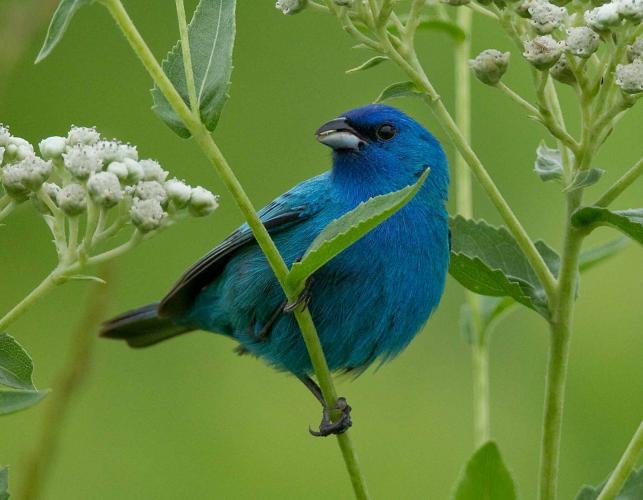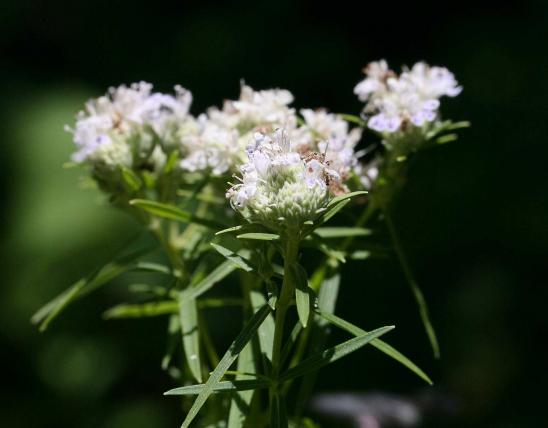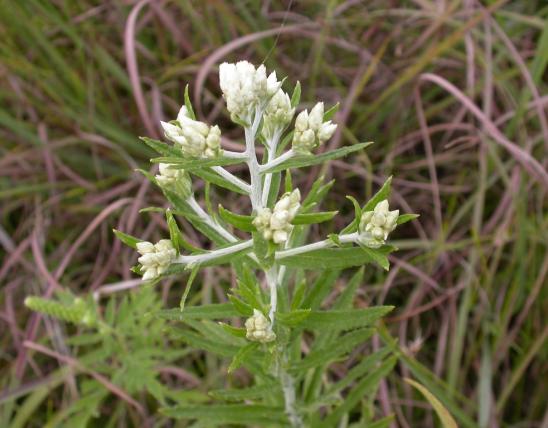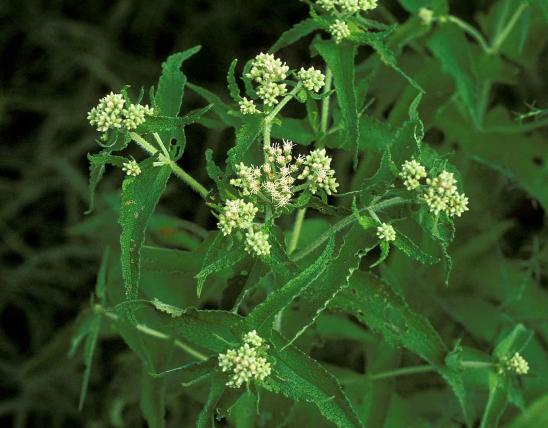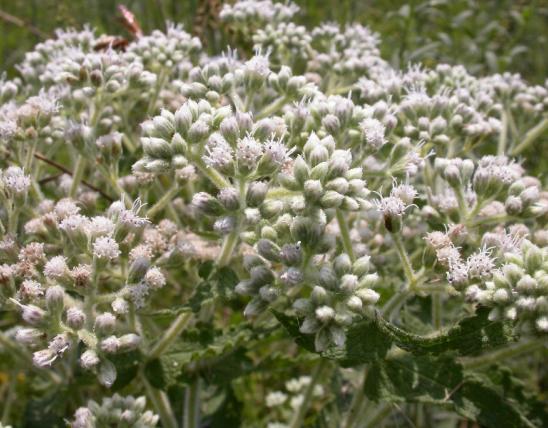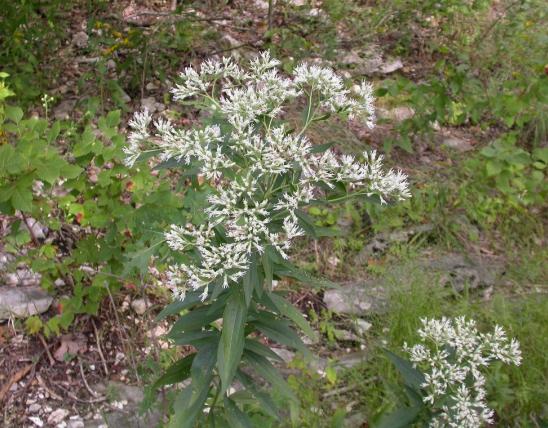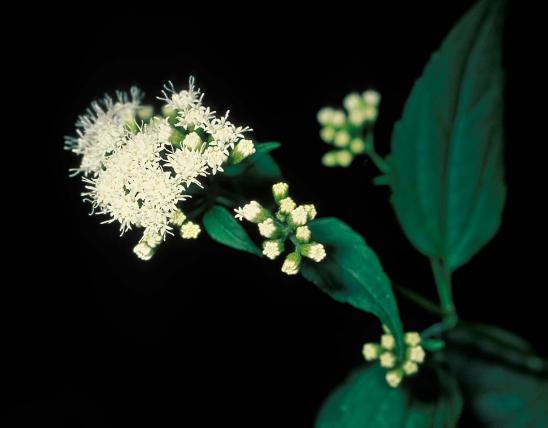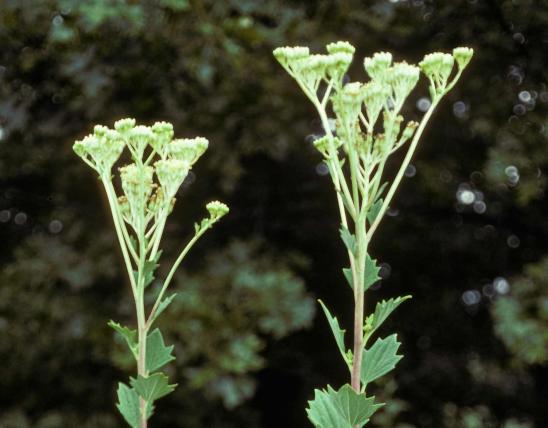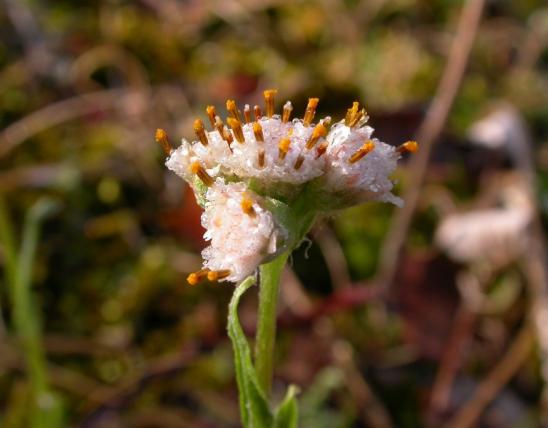
American feverfew, or wild quinine, is a perennial herb with stems single, usually unbranched below the flower cluster. It sometimes grows in colonies. The flowerheads are in flat-topped or slightly rounded, fuzzy white clusters about ¼ inch wide. The ray florets are few, tiny, and inconspicuous. Blooms May–September. The basal and lower stem leaves are aromatic, to 8 inches long and 4 inches wide, tapering into long petioles (leaf stems), elliptical to broadly ovate, roughened with short, stiff hairs, with a coarsely toothed or scalloped margin. Leaves and stems have tiny spherical yellow glands.
Similar species: Two varieties of this species are sometimes considered as separate species: Variety hispidum (sometimes called P. hispidum) is usually colonial, with several stems arising from a branching rhizome; the stems moderately to densely hairy with short, stiff, spreading hair, and the leaves with rather dense, spreading hairs along the undersurface midvein. Variety integrifolium is usually not colonial, with the rootstock somewhat thickened and tuberous, occasionally with a short rhizome; the stems are hairless or if hairy, then with short, soft, loosely ascending hairs; hairs on midveins on undersides of leaves more or less appressed.
Height: to 3 feet.

Scattered nearly statewide, but uncommon or absent from the northwestern quarter.
Habitat and Conservation
American feverfew occurs in glades, upland prairies, rocky open woods, forest openings, ledges and tops of bluffs, savannas, pastures, and roadsides. This native plant is a characteristic species of high-quality upland prairie plant communities.
Human Connections
The names feverfew and wild quinine indicate that the plant was used medicinally. Some Native American tribes made a poultice of the leaves to use for treating burns. Apparently the plant was also used as a diuretic. Today people plant it as part of a prairie restoration or native wildflower garden.
Ecosystem Connections
Insects visit the flowers for pollen and nectar. This plant is rarely eaten by mammals because of its coarse texture and bitter-tasting chemicals in the leaves.


